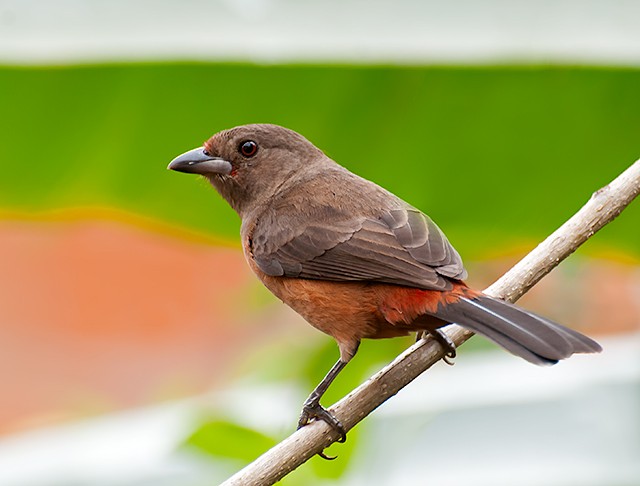Brazilian Tanager
A species of Silver-billed tanagers Scientific name : Ramphocelus bresilia Genus : Silver-billed tanagers
Brazilian Tanager, A species of Silver-billed tanagers
Botanical name: Ramphocelus bresilia
Genus: Silver-billed tanagers
Content
Description General Info
 Photo By Dario Sanches , used under CC-BY-SA-2.0 /Cropped and compressed from original
Photo By Dario Sanches , used under CC-BY-SA-2.0 /Cropped and compressed from original Description
The Brazilian tanager (Ramphocelus bresilius) is a species of bird in the family Thraupidae. It is endemic to eastern Brazil and far northeastern Argentina, occurring in the coastal region from Paraíba and southwards to Santa Catarina and Misiones. The Swedish naturalist Carl Linnaeus described the Brazilian tanager in 1766 in the twelfth edition of his Systema Naturae. He coined the binomial name Tanagra bresilia. It is now placed in the genus Ramphocelus which was introduced by the French zoologist Anselme Gaëtan Desmarest in 1805. The Brazilian tanager is a typical member of the family, with a heavy bill and sexually dimorphic plumage. It is 18 cm (7.1 in) long and weighs 28–35.5 g (0.99–1.25 oz). The plumage of the male is bright red with black wings and a black tail. The bill is black above and pale below. The female is mostly grey-brown with a brown-red belly and breast. A frugivorous bird, it is easily found in its natural biome wherever there is food enough available, tending to behave aggressively towards other species of birds when disputing for food. Its habitats include shrubby areas that are not forested, including coastal scrub, forest clearing and edge, swamps, gardens, and city parks. The species has declined in some areas due to trapping for the caged bird trade, but it is tolerant of disturbed habitats and is not considered to be threatened with extinction. The Brazilian tanager is omnivorous, taking pulpy fruits, seeds and insects. It nests by building a cup-shaped nest hidden amongst foliage, where it lays two to three greenish-blue, black-spotted eggs. 
Size
18 cm
Nest Placement
Shrub
Feeding Habits
Brazilian Tanager is omnivorous, consuming seeds, fruit pulp, insects, and even sand. While diet varies, brazilian Tanager often eats Eugenia fruits and seeds from Ficus and Alchornea. Commonly found in pairs, brazilian Tanager forages low among bushes and typically stays hidden midday.
Habitat
The brazilian Tanager typically inhabits various shrubby non-forest environments such as overgrown clearings, forest edges, parks, and gardens. They are frequently observed in areas adjacent to water, including swampy wood margins and marshes, and show a preference for regions with abundant shrubbery, occasionally near the ocean.
Dite type
Frugivorous
General Info
Feeding Habits
Bird food type

Fruit
Species Status
Not globally threatened.
Scientific Classification
Phylum
Chordates Class
Birds Order
Perching birds Family
Tanagers Genus
Silver-billed tanagers Species
Brazilian Tanager